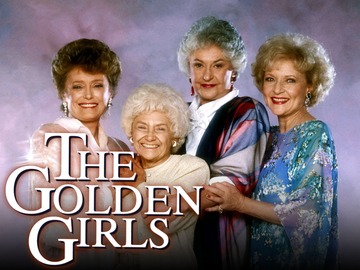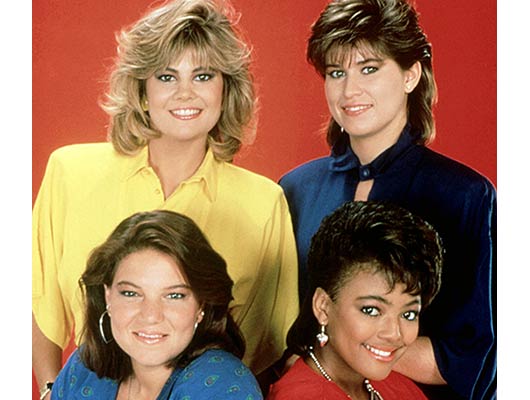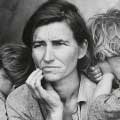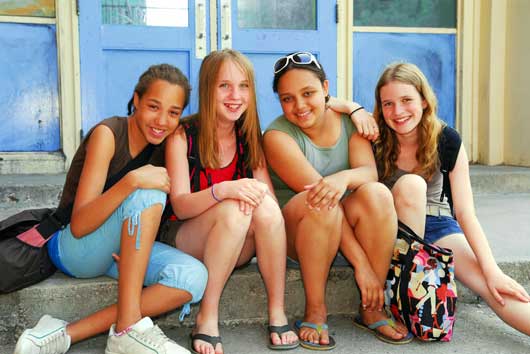Before Carrie, Samantha, Charlotte and Miranda, and even before Dorothy, Blanche, Sophia and Rose—there was Jo, Blair, Natalie and Tootie: The first fabulous foursome from The Facts of Life. These girls essentially gave us all a primer on, well, the facts of female friendships. Through their personas, which were neatly packaged in that clean, digestible eighties gloss, we got a glimpse into the universe of femininity and the various complexities and dynamics therein (and we also got to glimpse at a young, shaggy and smoldering George Clooney looking mighty sexy in a pair of form-fitting Calvins, but I digress). Back then, girl power was sacred, celebrated, glorified and made to feel crucial—very different from the blatantly antagonistic back-biting cattiness that today dominates our culture with phenomena like The Real Housewives and The Bachelor.
Read Related: Which Real Housewife Are You?
A landmark 2002 UCLA study suggests that women respond to stress with a cascade of brain chemicals that cause us to make and maintain friendships with other women. The researchers suspected that when the hormone oxytocin is released as part of the stress responses in a woman, it buffers the fight or flight response and encourages her to tend children and gather with other women. When she actually engages in this tending or befriending, studies suggest that more oxytocin is released, which further counters stress and produces a calming effect. The study shows that this calming response does not occur in men because testosterone—which men produce in high levels when they’re under stress—seems to reduce the effects of oxytocin. Estrogen, on the other hand, seems to enhance it. Perhaps the writers of all of these shows knew it just felt good to be around other women, even when times weren’t good.

So why was this hit TV series such a perfect metaphor for the female bond, and what can we learn from these archetypes today? Let’s start with the fact that the show was a spin-off of Diff’rent Strokes, which itself taught us some pretty radical and crucial truths about race in America. This tells us that the creators of these shows, while obviously wanting to make us laugh, clearly also wanted us to learn something. To begin with, the four femmes of The Facts of Life could not have been more different from one another, and yet their reality had them confined to sharing space and coexisting in an all-female boarding school in Peekskill, NY, with only Edna Garrett—an older woman with life experience—as their axis of balance. Though their tales were fictionalized, the paradigm was very much in the spirit of the more contemporary Real World model, where a slew of varying personalities are thrown together as part of an entertainment-driven experiment. In Facts, the girls not only face issues relevant to young adulthood, such as drugs, peer pressure, sexuality and eating disorders, but they must also face them together as a collective, at once juggling their personal experiences, perspectives, vulnerabilities and their differences.
 This, by the way, is exactly what all the fab female foursomes of television have always had to contend with—from Blanche and Samantha’s oversexed agendas, to Charlotte and Rose’s sweet inability to “get it,” to Dorothy and Miranda’s staunch feminist standpoints. With this in mind, let’s review our glorious girl groups from then to now (and consider that perhaps we are all, in some way, composites of each one):
This, by the way, is exactly what all the fab female foursomes of television have always had to contend with—from Blanche and Samantha’s oversexed agendas, to Charlotte and Rose’s sweet inability to “get it,” to Dorothy and Miranda’s staunch feminist standpoints. With this in mind, let’s review our glorious girl groups from then to now (and consider that perhaps we are all, in some way, composites of each one):
THE FACTS OF LIFE
Jo: The hard-hitting, street-smart, Bronx-raised guy’s girl with a soft heart deep down.
Blair: The looks-obsessed debutante (who really just wants Jo’s approval).
Natalie: The pleasantly plump purveyor of wit who also happens to be adopted.
Tootie: The brace-faced, gossip-loving, roller skate-wearing one who is young at heart.
THE GOLDEN GIRLS
Dorothy: The cynical and solid straight-shooter (with a penchant for sensible tunics).
Blanche: The sassy and Southern first lady of cougardom.
Rose: The soulful airhead who knows no evil.
Sophia: The wise-cracking know-it-all around which life orbits.
SEX AND THE CITY
Carrie: The unconventional beauty with all kinds of funk in her trunk.
Samantha: The chic nymphomaniac who laughs in the face of negativity.
Miranda: The reliable and butchy self-loathing ball-buster.
Charlotte: The childlike puritan disguised in Chanel.
This mash-up of character types became the backdrop against which life’s vicissitudes played out, teaching us some fundamental truths about female humanity in every episode that aired. Check out some of these life-lesson-wheeling highlights from the show that always gave us the facts:
- The first-ever episode, which aired in 1979 (pre-Ellen, pre-Will & Grace, and pre-Modern Family), had Blair accusing a fellow classmate of being a lesbian because she was a tomboy.
- In a later episode, the very same Blair takes it upon herself to get Natalie in touch with her birth mother.
- At one point, Jo dreams of her dad attending an award ceremony where she’ll be honored, but she’s weary of her peers finding out about his questionable past.
- In another episode the girls came home to the discovery that their home had burned to the ground. They had to literally pull together their resources, skills and talents to rebuild the place…to build a new foundation.
- When African-American Tootie develops a crush on a black boy, tensions rise among her all-white friends.
- Then there was Geri, Blair’s cousin who suffered with cerebral palsy, and who was the first handicapped person to play a regular role on a prime time sitcom.
Looking back at the show, it’s safe to say there is a little bit of all of them in all of us. And ultimately, you take the good, you take the bad, you take them all and there you have—the facts of life.











